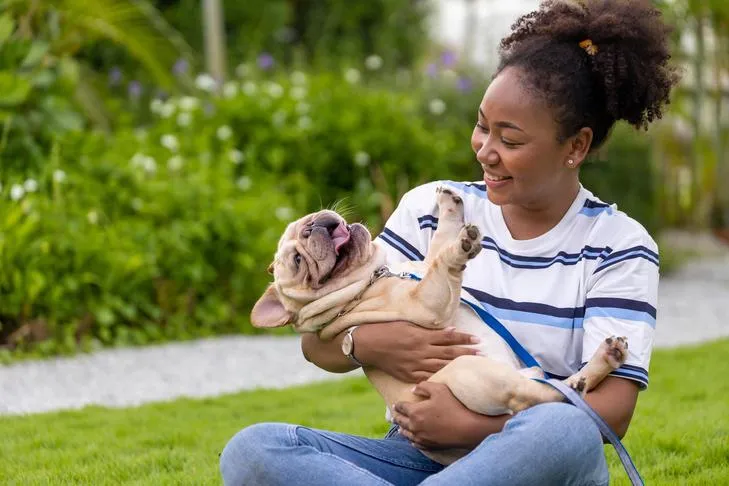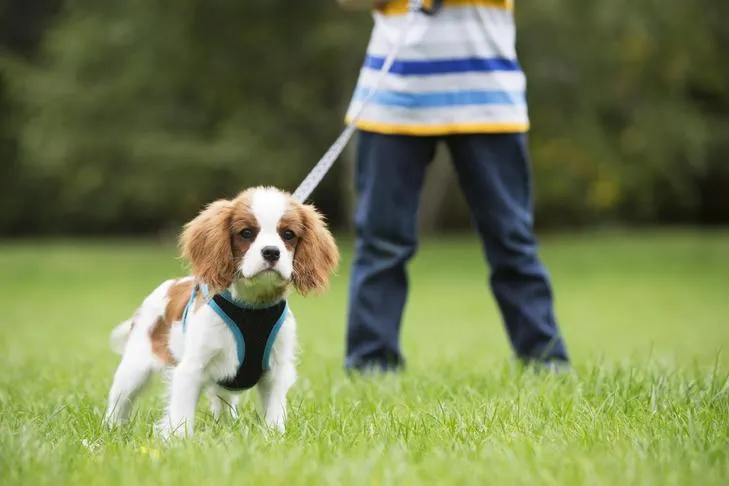Puppies, with their adorable antics, often come equipped with about 28 tiny, razor-sharp teeth that seem inexplicably drawn to your fingers or toes. While dog trainers commonly refer to this behavior as “play biting,” it can be frustrating and even painful when your otherwise cuddly companion seems to be all teeth. This nipping behavior is a completely normal part of puppy teething and essential for their development. The good news is that with a few simple, consistent steps, you can effectively train your dog to stop biting, ensuring a harmonious relationship for years to come.
Teaching Bite Inhibition
One of the most crucial lessons for any dog is learning to moderate the force of their bite, known as bite inhibition. There may be instances later in their life when they are in pain or feel fearful, and they might put their mouth on you or another person. If they have learned bite inhibition, they will understand not to bite down hard. Puppies naturally nip at each other during playtime. If a puppy bites too hard, their mother or a littermate will likely let out a loud yelp, effectively communicating, “Hey, that hurt!”
You can replicate this natural lesson by making a high-pitched “ow!” sound if your puppy bites you. However, it’s important to be observant, as for some puppies, this can actually over-excite them and encourage more biting. In such cases, a more effective approach is to quietly turn around, walk away, or gently place your puppy in their crate for a few minutes to help them calm down. When your puppy does disengage or calms down, be sure to reward them with a small treat and verbal praise, reinforcing the desired behavior.
 Siberian Husky puppy laying in the grass howling playfully.
Siberian Husky puppy laying in the grass howling playfully.
Biting Means ‘Game Over’
A fundamental rule to establish is that if your puppy bites you during play, playtime immediately ceases, without exception. It might sound counterintuitive, but yelling at your puppy can actually be perceived as a form of reward. It teaches them that biting elicits a response from you, which is a type of positive punishment that can inadvertently reinforce the behavior or even make them fearful of being handled. Instead, focus on teaching them that biting achieves nothing. Kathy Santo, a renowned dog trainer and columnist for AKC Family Dog, advises turning around and tucking your hands into your armpits.
Santo explains, “It’s actually a calming signal and a minor form of attention withdrawal.” She also cautions, “Be careful not to roughhouse with your young pup in ways that only encourage them to lose control and bite you.” This method helps your puppy understand that mouthing leads to the removal of attention and fun, making them less likely to repeat the action. When you teach your puppy how to play appropriately, you can also consider integrating commands like how to train a dog to stay into their routine, which helps with overall impulse control.
Offer Appropriate Chew Alternatives
Always keeping a dedicated puppy chew toy within reach is an excellent strategy. This allows you to anticipate biting behavior and immediately substitute the toy for your hands, fingers, or even furniture. By consistently offering an acceptable item, you clearly communicate to your puppy what is appropriate to bite and chew. If they start nipping at your fingers or toes while you are playing, simply offer them the toy instead.
If the nipping persists even after offering a toy, it’s crucial to stop the play session immediately. Another effective redirection technique, especially if you’ve been training your puppy to sit, is to ask them to perform a known command and then reward them with the chew toy for compliance. This redirects their energy into a positive, learned behavior and associates good choices with rewards.
Preventing the Pounce
Puppies often exhibit a playful behavior of pouncing on your legs or feet as you walk. To address this, Santo suggests holding a high-value treat next to your leg as you move. This tactic helps the puppy learn to walk nicely alongside you, associating good behavior with a delicious reward. This same method is commonly employed when teaching a puppy to walk on a leash without pulling. If you’re struggling with your puppy pulling, resources on my puppy keeps pulling on the leash can provide additional guidance.
 Young woman sitting in the grass, gently holding her French Bulldog.
Young woman sitting in the grass, gently holding her French Bulldog.
Utilizing Time-Outs Effectively
A time-out can be a valuable tool when your puppy is overexcited or relentlessly biting. Gently place your puppy in their crate, allowing them a chance to calm down and preventing them from continuing the biting behavior. It’s vital to ensure they do not associate the crate with punishment. Approach this calmly and neutrally. Once your puppy has settled down and is calm, you can release them from the crate. This teaches them that calm behavior earns them freedom and attention, while biting leads to a temporary removal from the exciting environment.
Addressing Underlying Needs
Sometimes, a puppy that keeps biting is actually an overtired puppy that desperately needs a nap. In these instances, placing them in a quiet space or their crate to rest can work wonders. Other times, biting can be a sign that they need a potty break, or perhaps they are hungry or thirsty. Before assuming the biting is purely behavioral, rule out these basic needs. Ensuring your puppy’s fundamental comfort can often reduce unwanted nipping significantly. For more tips on managing leash behavior, consider reading how to get puppy to stop pulling.
Channeling Excess Energy
If your puppy continues to bite even after you’ve offered a toy multiple times, they may simply need to burn off some physical or mental energy. A well-exercised puppy is often a well-behaved puppy. Take them out into the yard for a good run around, engage them in a game of fetch, or provide them with a puzzle toy that challenges their mind. Adequate exercise and mental stimulation can significantly reduce the likelihood of excessive biting out of boredom or pent-up energy.
 Boy walking a King Charles Cavalier Spaniel through a field.
Boy walking a King Charles Cavalier Spaniel through a field.
Reinforcing Desired Behaviors
We often overlook the importance of reinforcing calm and quiet behavior. When your puppy is settled and not biting, make sure to acknowledge it with a cheerful “good dog,” a small piece of kibble, or a gentle pat. Through positive reinforcement, you actively help them understand which behaviors you are looking for and encourage them to repeat those actions. This builds a strong foundation of desired conduct.
Enrolling in Puppy Classes
Enrolling your puppy in a structured class, such as an AKC S.T.A.R. Puppy program or another reputable local class, offers an excellent opportunity for socialization with other dogs and people in a controlled environment. These classes teach fundamental obedience and help puppies learn appropriate social etiquette, which can further aid in curbing biting behaviors.
Teaching your puppy to be polite with their mouth might seem like a daunting challenge at first, but patience and consistency are truly paramount. It’s common for puppies to be well-behaved in one play session and then return with teeth-first enthusiasm in the next. As Dr. Jerry Klein, Chief Veterinarian for the AKC, notes, “Play biting does not mean your puppy is vicious.” However, if you haven’t been able to effectively moderate the behavior by the time your dog reaches 6 months of age, it is highly advisable to consult an experienced dog trainer or an animal behavior specialist for professional guidance. These experts can provide tailored strategies to help you and your dog overcome persistent biting issues.
